
[143] Fallopia baldschuanica, Bukhara Fleeceflower
Introduction
Fallopia baldschuanica is a rapidly spreading vine plant, native to Asia, and becoming naturalized and invasive in Britain. It has several common names and is sold as Russian Vine or Mile-a-minute Plant, but I will call it Bukhara Fleeceflower. Other names include Chinese Fleecevine and Silver Lace Vine and there are several options about spelling and hyphenation.
It may sometimes still be called by its synonym Polygonum baldschuanica.
Taxonomy
Kingdom – Plants
Division – Vascular Plants
Class – Angiosperms (Flowering Plants)
Order – Caryophyllales
Family – Polygonaceae
Subfamily – Polygonoideae
Tribe – Polygoneae
Genus – Fallopia
Scientific Name – Fallopia baldschuanica
Synonyms include Polygonum baldschuanicum, Bilderdykia baldschuanica, Fagopyrum baldschuanicum, Tiniana baldschuanica and Reynoutria baldschuanica. (The ending of the species epithet has to change to match the genus gender.)
Name
Its names come from several countries where it was found as a native plant. Bukhara is in Uzbekistan.
The genus Fallopia was first defined by Michael Adanson, (1727-1806) a French botanist, in 1763, who did not explain the name. It is believed to come from the Italian botanist Gabrielle Falloppio (1523-62), superintendent of the botanical garden at Padua. He was also an important anatomist and among other things gave his name to the Fallopian tubes.
I can’t find a definitive origin for baldschuanica, which is also the epithet for a species of Jurinea plant but I think comes from Baldschuwon or Baldzhuvon (БАЛҶУВОН) in Tajikistan, 700 km away from Bukhara. It must come from a place rather than a person because it’s in nominative adjective form in Latin rather than genitive singular.
Description
Many members of the genus Polygonum have recently been moved out into the genera Bistorta, Fagopyrum, Koenigia, Fallopia, Persicaria and Reynoutia. The genus Fallopia now has about a dozen members, a mixture of shrubs and climbing plants.
Bukhara Fleeceflower is a spreading climber. Its leaves are simply shaped and pointed.

It supposedly spreads to ten metres but the following picture from a local park could be single plant.

As you can see, it is covered in white flowers.
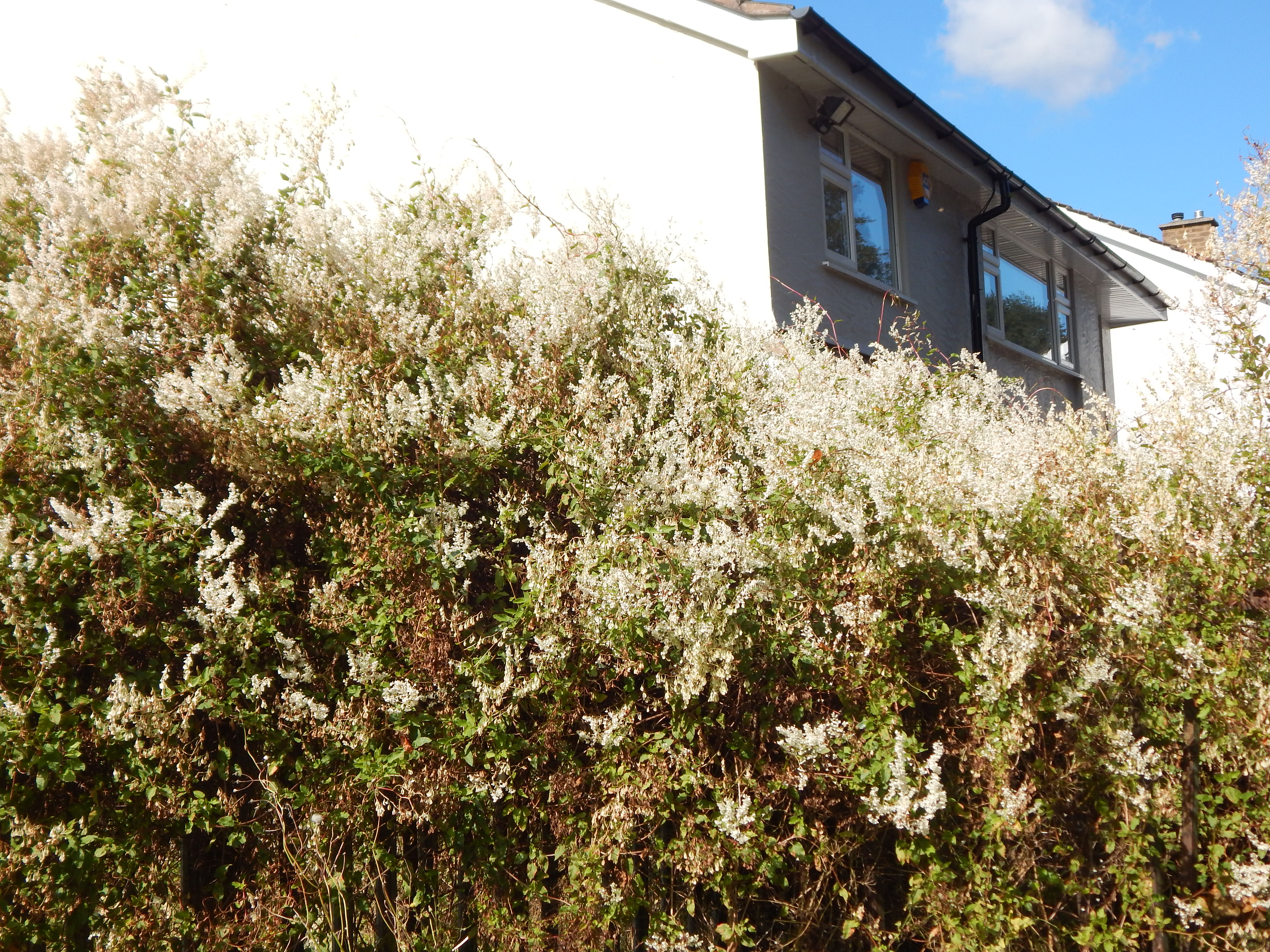
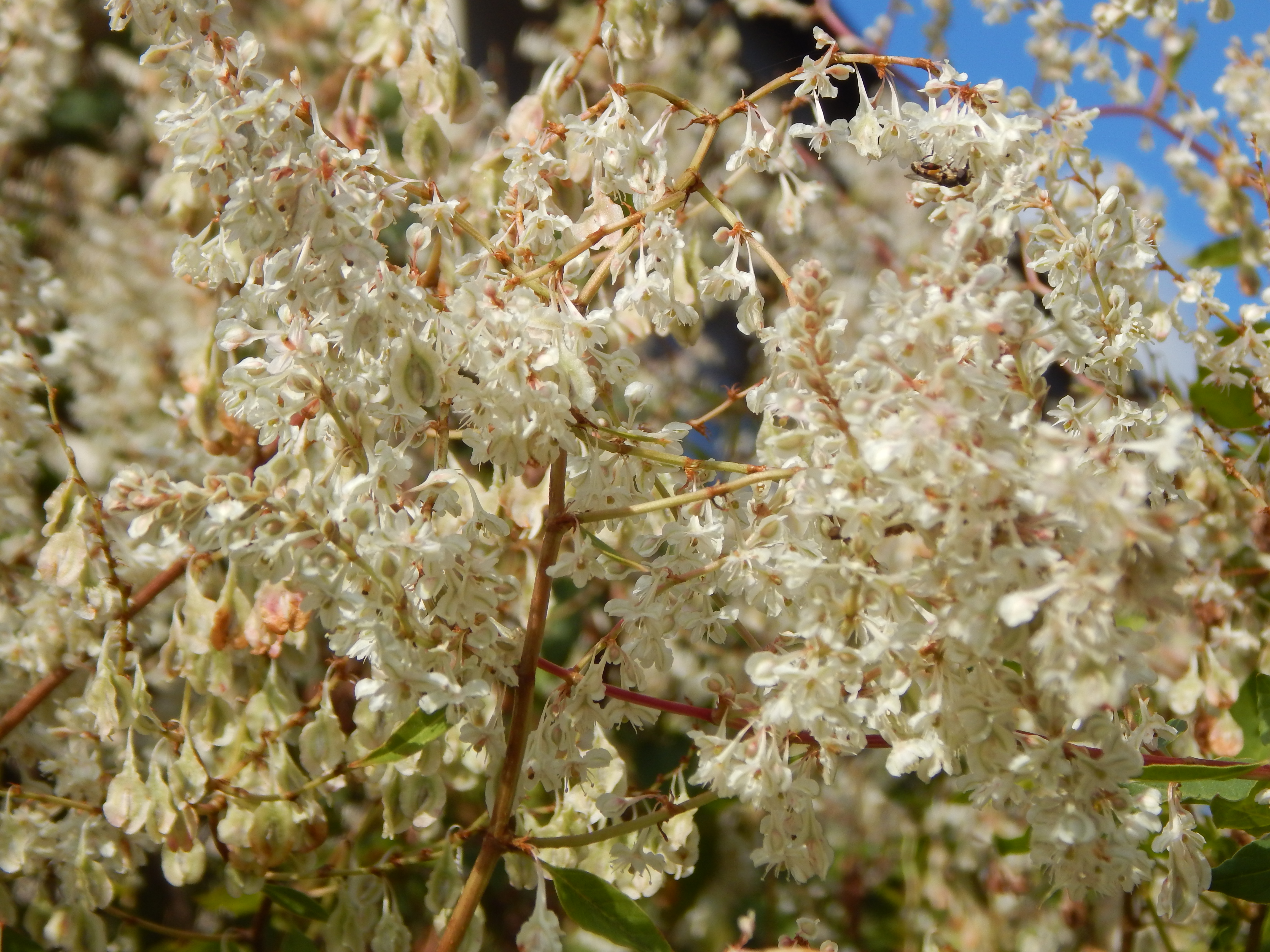


You need to look very closely to see the individual flowers.

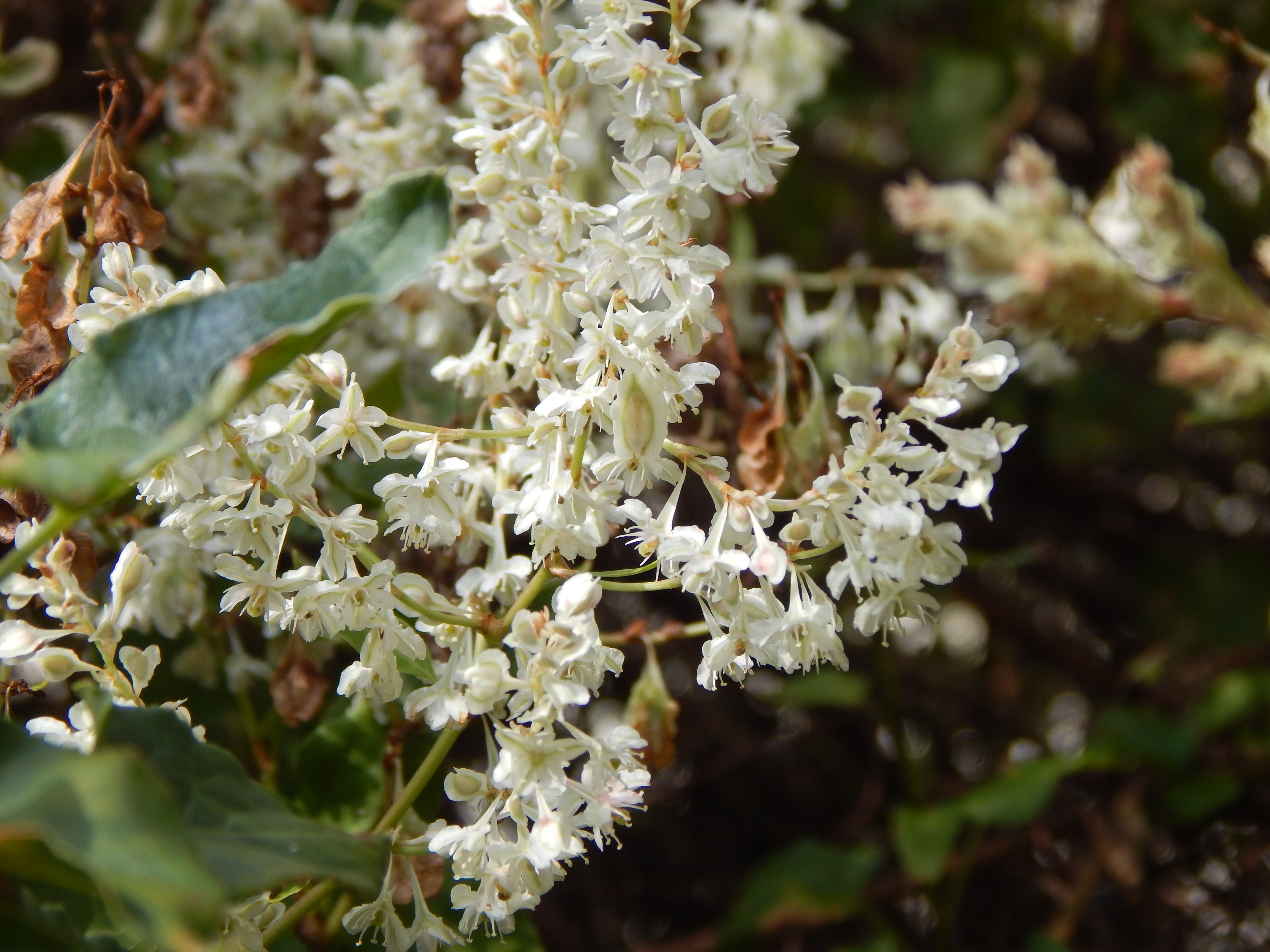
The fruits are tiny and flat and they eventually turn black.
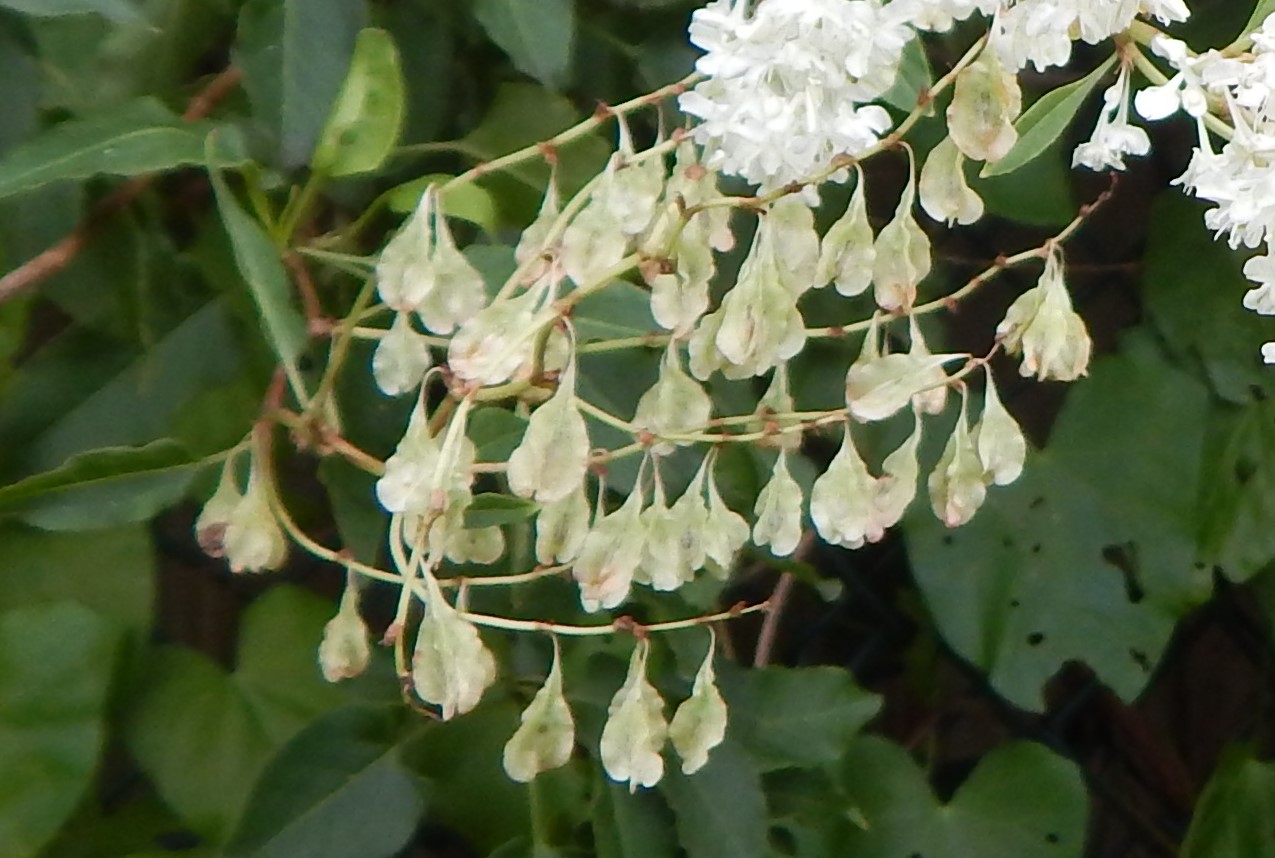
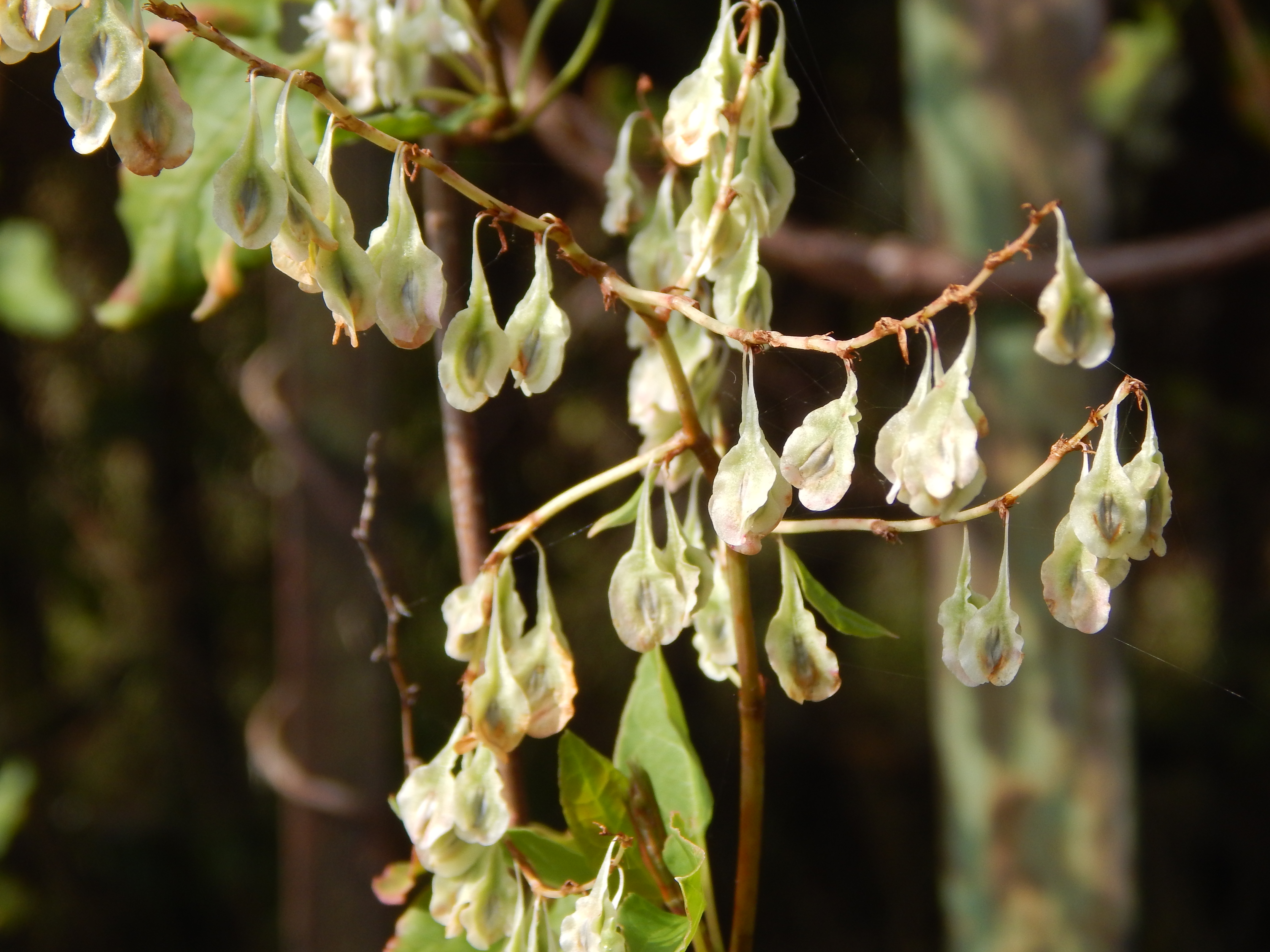
Habitat and use
Fallopia baldschuanica is native to a large area of Russia and the former USSR.
It is grown as a cultivated plant, often to cover and obscure walls.
Other Notes
I see this plant in wild places where it has escaped but it doesn’t seem to be a major invasive problem yet in Britain.
I wasn’t expecting to have to look up the Tajik language and orthography for this blog.
See also
[298] Reynoutria japonica, Japanese Knotweed, is a close relative that is considered to be invasive in Britain.
